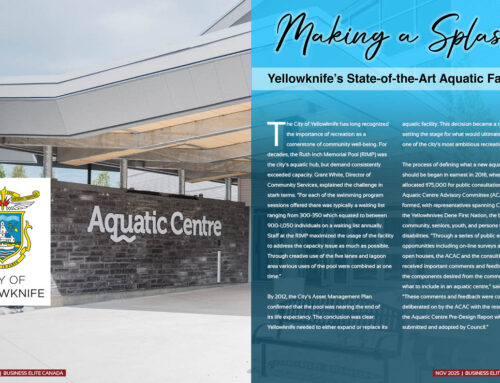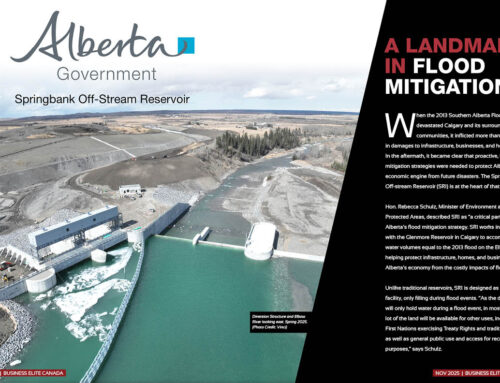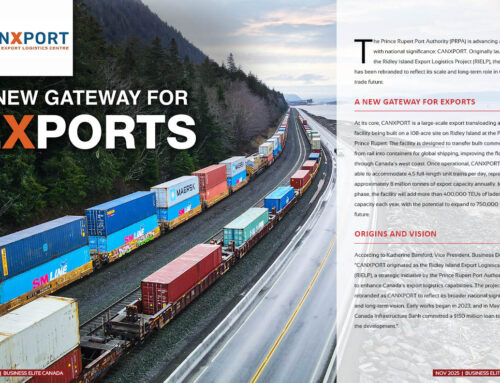For nearly nine decades, the Pattullo Bridge has served as a crucial connection between New Westminster and Surrey, B.C. The Province of British Columbia is constructing a new bridge to replace the existing structure for a safer and more efficient crossing for all users. Fraser Crossing Partners, a joint venture between Acciona and Aecon, was selected as the contractor responsible for the design and construction of the new bridge.
Executive Project Director Wendy Itagawa explains the significant improvements the new bridge will bring, saying, “The new four-lane bridge will provide important improvements for everyone using the bridge, including people who are driving, cycling or walking, as well as communities on either side of the bridge.” Unlike the existing bridge, which has narrow lanes and flexible delineators along the centerline, the new structure will feature modern, wider lanes separated by a centre median barrier. “A safer crossing for all bridge users is a key priority,” says Itagawa.
Pedestrians and cyclists will also benefit from new, dedicated walking and cycling paths, which will be separated from traffic by a barrier on both sides of the bridge. According to Itagawa, these features are designed to “ensure safe, accessible travel for non-motorized users,” while also integrating “better connections to, from and near the bridge.” Viewing platforms on both sides of the bridge will provide pedestrians and cyclists with a place to pause and take in views of the Fraser River.
The decision was made to replace the bridge rather than rehabilitate the existing structure because the current bridge was built in 1937 and does not meet modern design standards. The bridge’s lanes are too narrow, and the structure requires lane closures at night for safety. “A new bridge is needed to maintain this critical link between New Westminster and Surrey,” says Itagawa.
The replacement bridge is expected to support economic growth and foster regional development. “The new bridge will enhance regional connectivity, supporting local businesses and industries reliant on efficient goods movement,” says Itagawa.
The design of the new bridge also incorporates future transportation needs, allowing for potential future expansion to six lanes by attaching new walking and cycling paths on the outside of the bridge. The Province of B.C. will monitor the new bridge’s traffic performance and will consult with First Nations, the municipalities on each end of the bridge, TransLink and the Mayors’ Council before potentially expanding to six lanes.
Seismic resilience has been a major focus in the design and engineering of the new bridge, with it being engineered to modern design standards, incorporating robust and deep foundations to withstand significant seismic events. The structure has been built to remain usable by emergency services following a major earthquake and by regular traffic after a minor seismic event. The inclusion of advanced monitoring sensors will allow engineers to assess the bridge’s condition after seismic activity. Soil densification and in-river bridge pier scour protection further enhance the bridge’s ability to withstand natural disasters.
A key aspect of environmental mitigation involves collaboration with First Nations. “The Fisheries Act Authorization for the project requires the development of in-stream, marsh and riparian habitats to offset loss from the new in-river bridge piers,” says Itagawa. These new habitats will benefit species of critical importance, including sockeye, coho, chum, chinook, and pink salmon. Since 2018, discussions with First Nations have been ongoing to identify suitable sites for these habitat restoration projects. “The qiqéyt Foreshore Habitat Restoration Project, at a location slightly upstream of the new bridge on the Surrey side, has been selected,” says Itagawa. Further planning is underway for a second fish and fish habitat offsetting project intended to benefit eulachon and sturgeon.
Collaboration with local governments, First Nations, and stakeholders has played a fundamental role in shaping the Pattullo Bridge Replacement Project. Itagawa emphasizes the importance of this collaboration, stating, “The Pattullo Bridge Replacement Project is located in an area of great past, present, and future significance to First Nations.” First Nations stewardship priorities are guiding essential project activities, including cultural heritage management and fish and fish habitat offsetting. The project team has also worked closely with the cities of New Westminster and Surrey on road improvements, new multi-use paths, traffic management, and construction activities.
As the completion of the new bridge approaches, the long-term benefits for commuters, businesses, and the region become increasingly clear. “The bridge will provide a safer and more reliable crossing for commuters,” says Itagawa. By supporting economic growth, fostering regional development, and incorporating environmental sustainability, the new bridge will serve as a key component of Metro Vancouver’s transportation network for generations to come.
For more information please visit https://www2.gov.bc.ca/gov/content/home






